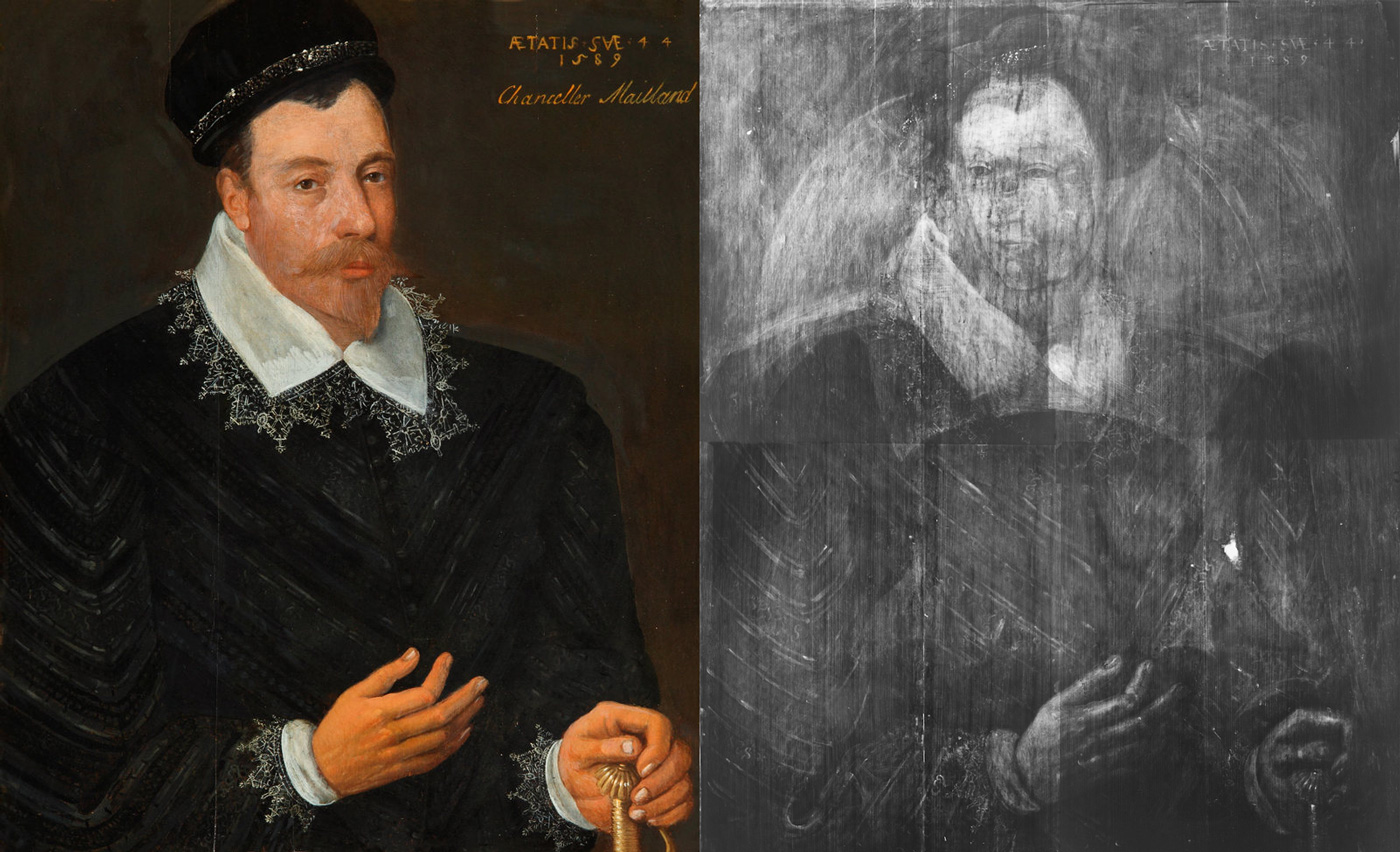X-Rays Reveal Ghostly Portrait of Mary, Queen of Scots

The ghostly, unfinished portrait of a woman believed to be Mary, Queen of Scots has been found underneath the 16th-century portrait of a man dressed in a black doublet, according to new research.
Art conservators discovered and identified Mary's hidden portrait by using X-ray photography. The black-and-white X-ray images revealed a woman with similarities to other near-contemporary portraits of the queen, said Caroline Rae, a research fellow at the Courtauld Institute of Art, in London, England, who is doing the research in conjunction with the National Galleries of Scotland.
"The discovery of this hidden portrait of Mary, Queen of Scots is an exciting revelation," Rae said in a statement. [Gallery: Hidden Gems in Renaissance Art]
Rae made the finding while she was studying the portrait of the man dressed in a black doublet, who is known as Sir John Maitland, 1st Lord Maitland of Thirlestane, the lord chancellor of Scotland. The 1589 painting is attributed to Adrian Vanson, an artist with ties to the royal family; he was the court painter of James VI of Scotland, who was the son of Mary, Queen of Scots.
Rae used X-rays to examine the painting because this wavelength of light can penetrate through paint layers, but is stopped by pigments that contain heavy metals, such as lead white. In this case, the X-ray images show lead white depicting Mary's face, as well as the outlines of her dress and hat.
An analysis of the portrait revealed a face with a strong resemblance to Mary, Queen of Scots. For instance, the woman looks like two miniatures painted of the queen by the well-known English miniaturist Nicholas Hilliard (1547 to 1619). Moreover, other clues — the woman's head is tilted sideways; her hand, which is resting on her waist, is holding something; and she's wearing a wired cap and square-necked dress — also look like other portraits of Mary, Rae said.
"[The discovery] aids in illuminating our understanding of Adrian Vanson, a Netherlandish émigré artist who came to Jacobean Scotland to seek a new life and quickly ascended to the status of Crown painter," Rae said.
Sign up for the Live Science daily newsletter now
Get the world’s most fascinating discoveries delivered straight to your inbox.
After abandoning Mary's portrait, the artist turned Mary's dress into the lord's black doublet and modified Mary's right hand to be the lord's right hand. This finding "explains why the portrait of the Scottish Chancellor was so awkwardly painted," Rae told the Independent.
Hidden pictures
The Queen, originally known as Mary Stuart, was a controversial figure in her day. Mary, the great-grandniece of King Henry VIII of England, became Queen of Scots before she was less than 1 year old. A marriage with a French dauphin who later became king made her France's queen consort, but when her husband died of an ear infection, she became a widow at age 18 and returned to Scotland.
Mary then married her cousin, Henry Stewart, and together they had a son — James VI. But she was later forced to abdicate the throne, based on accusations that she was involved with his murder. Later, Mary was imprisoned by Queen Elizabeth in 1568, and executed in 1587, two years before the date on the finished portrait. [Photos: Hidden Portrait by Edgar Degas Revealed with X-Rays]
Vanson may have covered up the portrait after Mary's execution, the researchers said. However, it's unlikely Vanson ever saw Mary in person. Rather, "it shows that portraits of the queen were being copied and presumably displayed in Scotland around the time of her execution, a highly contentious and potentially dangerous thing to be seen doing."
The public can see the X-ray images at the Scottish National Portrait Gallery, in a new display that will last for several months.
Original article on Live Science.

Laura is the archaeology and Life's Little Mysteries editor at Live Science. She also reports on general science, including paleontology. Her work has appeared in The New York Times, Scholastic, Popular Science and Spectrum, a site on autism research. She has won multiple awards from the Society of Professional Journalists and the Washington Newspaper Publishers Association for her reporting at a weekly newspaper near Seattle. Laura holds a bachelor's degree in English literature and psychology from Washington University in St. Louis and a master's degree in science writing from NYU.










